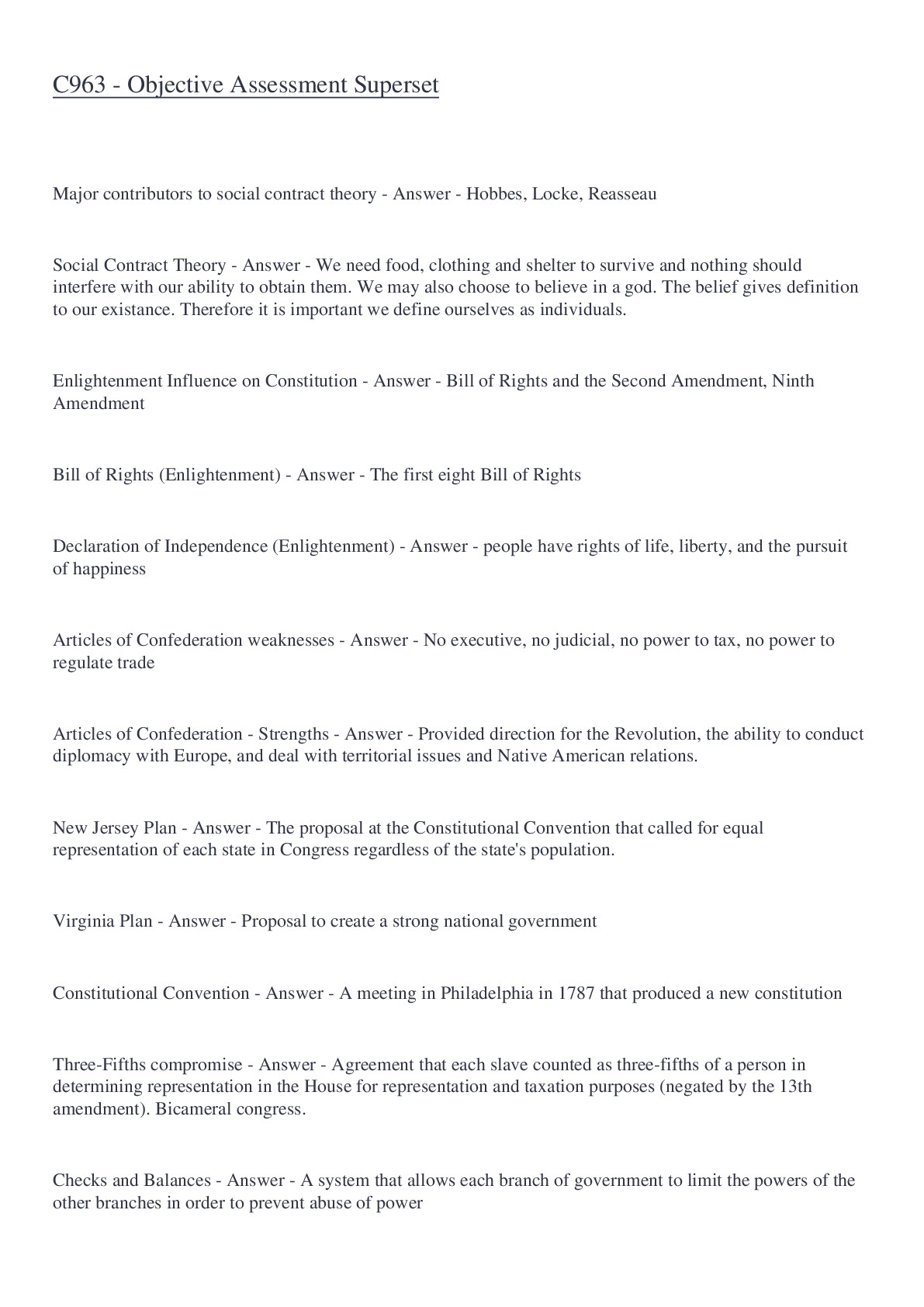Social Sciences > EXAM > WGU C963 - Objective Assessment Superset Graded A+ (All)
WGU C963 - Objective Assessment Superset Graded A+
Document Content and Description Below
Major contributors to social contract theory - ANSWER Hobbes, Locke, Reasseau Social Contract Theory - ANSWER We need food, clothing and shelter to survive and nothing should interfere with our abi... lity to obtain them. We may also choose to believe in a god. The belief gives definition to our existance. Therefore it is important we define ourselves as individuals. Enlightenment Influence on Constitution - ANSWER Bill of Rights and the Second Amendment, Ninth Amendment Bill of Rights (Enlightenment) - ANSWER The first eight Bill of Rights Declaration of Independence (Enlightenment) - ANSWER people have rights of life, liberty, and the pursuit of happiness Articles of Confederation weaknesses - ANSWER No executive, no judicial, no power to tax, no power to regulate trade Articles of Confederation - Strengths - ANSWER Provided direction for the Revolution, the ability to conduct diplomacy with Europe, and deal with territorial issues and Native American relations. New Jersey Plan - ANSWER The proposal at the Constitutional Convention that called for equal representation of each state in Congress regardless of the state's population. Virginia Plan - ANSWER Proposal to create a strong national government Constitutional Convention - ANSWER A meeting in Philadelphia in 1787 that produced a new constitution Three-Fifths compromise - ANSWER Agreement that each slave counted as three-fifths of a person in determining representation in the House for representation and taxation purposes (negated by the 13th amendment). Bicameral congress. Checks and Balances - ANSWER A system that allows each branch of government to limit the powers of the other branches in order to prevent abuse of power Separation of Powers - ANSWER Constitutional division of powers among the legislative, executive, and judicial branches, with the legislative branch making law, the executive applying and enforcing the law, and the judiciary interpreting the law Federalists - ANSWER A term used to describe supporters of the Constitution during ratification debates in state legislatures. Anti-Federalists - ANSWER Opponents of the American Constitution at the time when the states were contemplating its adoption. Ratifying the Constitution - ANSWER Article VII, 9 out of 13 states had to agree, it was ratified at state conventions Federalist #10 (factions) - ANSWER Elites can never take over rule of the government due to too many factions. Federalist #51 (Madison) - ANSWER Separation of powers, checks and balances Separations of Powers - ANSWER The division of the federal government into three branches each with its own powers Government Branches - ANSWER Three sections of the US government: legislative, executive, and judicial. Each branch has powers that restrict the other branches powers. How are laws made and enforced using the separation of powers - ANSWER Congress originates laws Judicial branch reviews laws for constitutionality Executive branch enforces laws system of checks and balances - ANSWER Constitutional system in which each branch of government places limits on the power of other branches Several checks the judicial branch has on the legislative and executive branches - ANSWER Executive: Can overturn actions of the president with judicial review if the actions violate the Constitution Serve during good behavior to maintain independence of judiciary Legislative: Can overturn acts of Congress as unconstitutional if they violate the law Can influence laws by interpretation Serve during good behavior to maintain independence of judiciary Several checks the legislative branch has on the judicial and executive branches - ANSWER Judicial: Senate must approve judges and justices Controls jurisdiction of the courts Determines size of Supreme Court House can impeach judges and Senate can remove them by two-thirds vote Executive: Can override a presidential veto by a two-thirds vote in both chambers Must approve treaties by a two-thirds vote in the Senate Control of funding activities of the executive branch Presidential nominees must be approved by the Senate Only Congress can declare war House can impeach the president or vice president and the Senate can remove them by a two-thirds vote Several checks the executive branch has on the legislative and judicial branches - ANSWER Legislative: Can veto legislation Can use executive agreements Can use executive orders Negotiates treaties (not Congress) Judicial: Nominates judges Power of pardon Several advantages and disadvantages of a federalist system - ANSWER Advantages: States can innovate when dealing with problems States better designed to deal with needs of citizens States can add to national programs Separation of powers and system of checks and balances Offers opportunity for individual to participate more in the political system. Disadvantages: Inefficient Difficulties when states have conflicts Duplication of effort costly Not all citizens are treated the same Define the three types of Congressional powers including implied, enumerated and inherent powers - ANSWER Enumerated: Power stated in Constitution Implied: Not stated in Constitution but inferred Inherent: Assumed to exist as a result of the country's existance Several powers held by the legislative branch - ANSWER Tax citizens , Set the budget , Regulate commerce, Declare war, Provide advice and consent on appointments, Impeach individuals, Oversee the powers of the judicial and executive branches Congressional powers as either implied, enumerated or inherent - ANSWER Enumerated: Taxation, budget authority, power to regulate, power to declare war, checks on other branches including advice and consent and impeachment. Implied: Power to oversee the other branches as well as reign in administrative agencies. Examples of Congress exercising its power under the Commerce Clause - ANSWER Regulating trade between states, setting a federal minimum wage, prohibiting discrimination employment. Ways in which the legislative branch can engage in checks and balances with the other branches of government - ANSWER Judicial: Senate must approve judges and justices Controls jurisdiction of the courts Determines size of Supreme Court House can impeach judges and Senate can remove them by two-thirds vote Executive: Can override a presidential veto by a two-thirds vote in both chambers Must approve treaties by a two-thirds vote in the Senate Control of funding activities of the executive branch Presidential nominees must be approved by the Senate Only Congress can declare war House can impeach the president or vice president and the Senate can remove them by a two-thirds vote Process of legislation and how bills become law - ANSWER 1. A bill is proposed 2. Introduced in house or senate 3. Passed to committee or subcommittee 4. Floor action: debate and voting 5. Conference committee resolves conflicting points. New version sent back for approval. 6. President can sign bill into law or choose to veto 7. If veto, congress can override veto by passing bill in house and senate by a 2/3rd majority. 8 YAY! New Law! Purpose of congressional committees and describe several types - ANSWER A committee is a smaller subset of representatives or senators that consider particular types of bill. Committees can be either long-standing or temporary. Committees serve political as well as lawmaking functions. Different committees: House Committee Resources Committee Foreign Relations has sub-committees on Europe and Africa Committee on Agriculture Committee on Energy Define reapportionment, redistricting, and gerrymandering - ANSWER Reapportionment - Redrawing voting districts after a census Redistricting - The redrawing of congressional district lines within a state to ensure roughly equal populations within each district Gerrymandering - Process of redrawing legislative boundaries for the purpose of benefiting the party in power. Role of the census in the reapportionment and redistricting processes - ANSWER Reapportionment occurs when census data indicates needed adjustments so a state is not paying too much or too little in federal taxes. Every state goes through reapportionment every 10 years. The census helps to determine the changes to its districts, taxes, etc. Miller vs. Johnson - ANSWER Race cannot be the dominant and controlling factor for redrawing congressional districts. Evolution of the presidency in the United States - ANSWER 1. Established 1787 2. Electoral College emerged as way to elect/re-elect president 3. Duties outlined in newly-formed Constitution 4. Impeachment built into Constitution - clear process for removal 5. Twelfth Amendment - Pairs Presidential candidate with running mate on a ticket 6. Budget and Accounting Act of 1921 - Executive branch put in charge of forming budget. 7. Twenty Second Amendment limits terms 8. Expansion of Duties - From Washington who formed first cabinet to now President contributes to office. Term limits for the President - ANSWER 2 terms or 10 years Impeachment Process - ANSWER Constitutional process for removing executive officers & judges for "treason, high crimes & misdemeanors" (whatever Congress thinks is impeachable). Two stages: (1) House decides to impeach (accuse) target (simple majority); (2) Senate holds trial to convict (2/3 majority). Andy Johnson and Bill Clinton were impeached but not convicted. Nixon resigned as Articles of Impeachment were being drafted! Duties of the President - ANSWER 1. Command [Show More]
Last updated: 1 year ago
Preview 1 out of 19 pages
Instant download
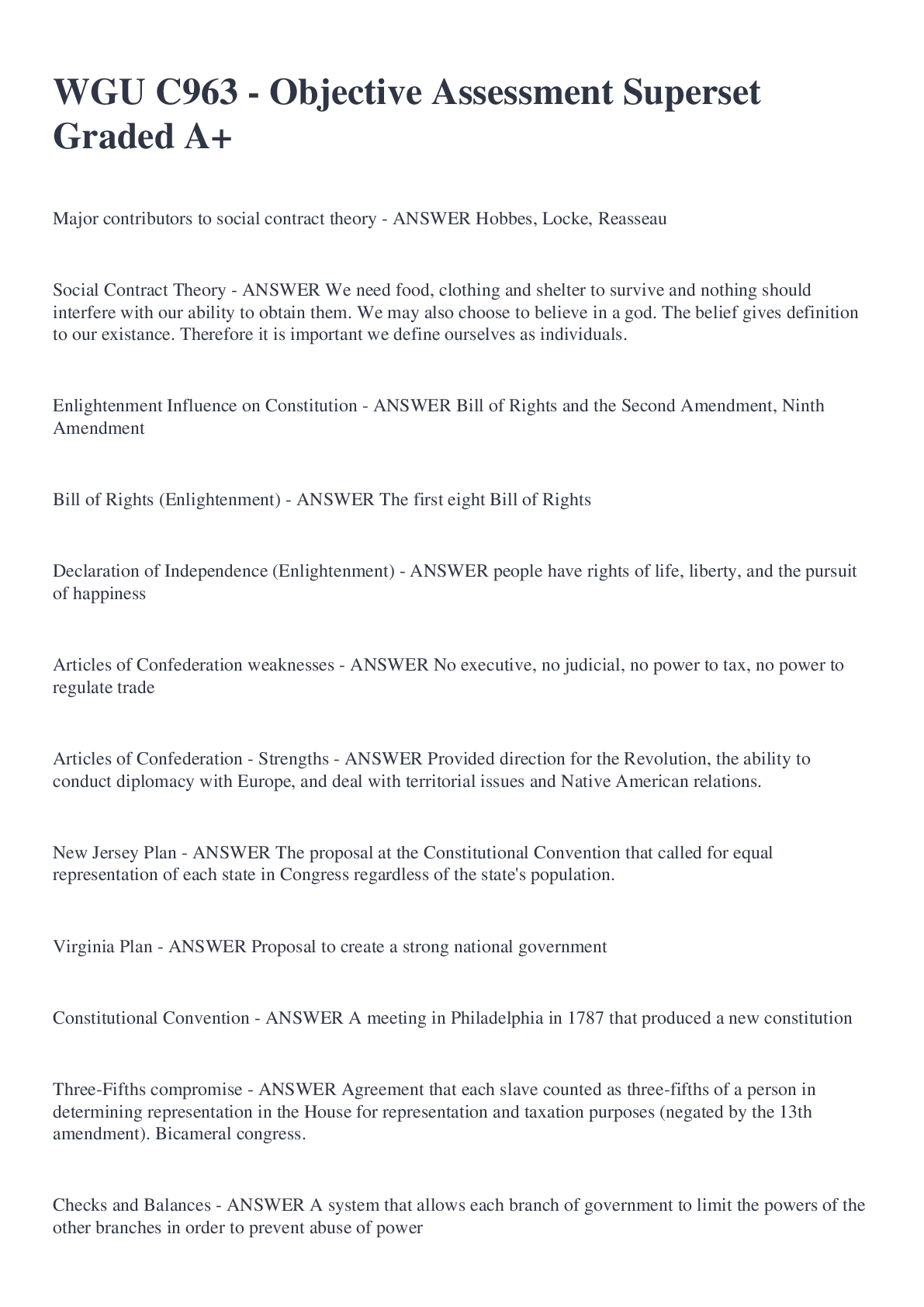
Buy this document to get the full access instantly
Instant Download Access after purchase
Add to cartInstant download
Reviews( 0 )
Document information
Connected school, study & course
About the document
Uploaded On
Sep 05, 2022
Number of pages
19
Written in
Additional information
This document has been written for:
Uploaded
Sep 05, 2022
Downloads
0
Views
90

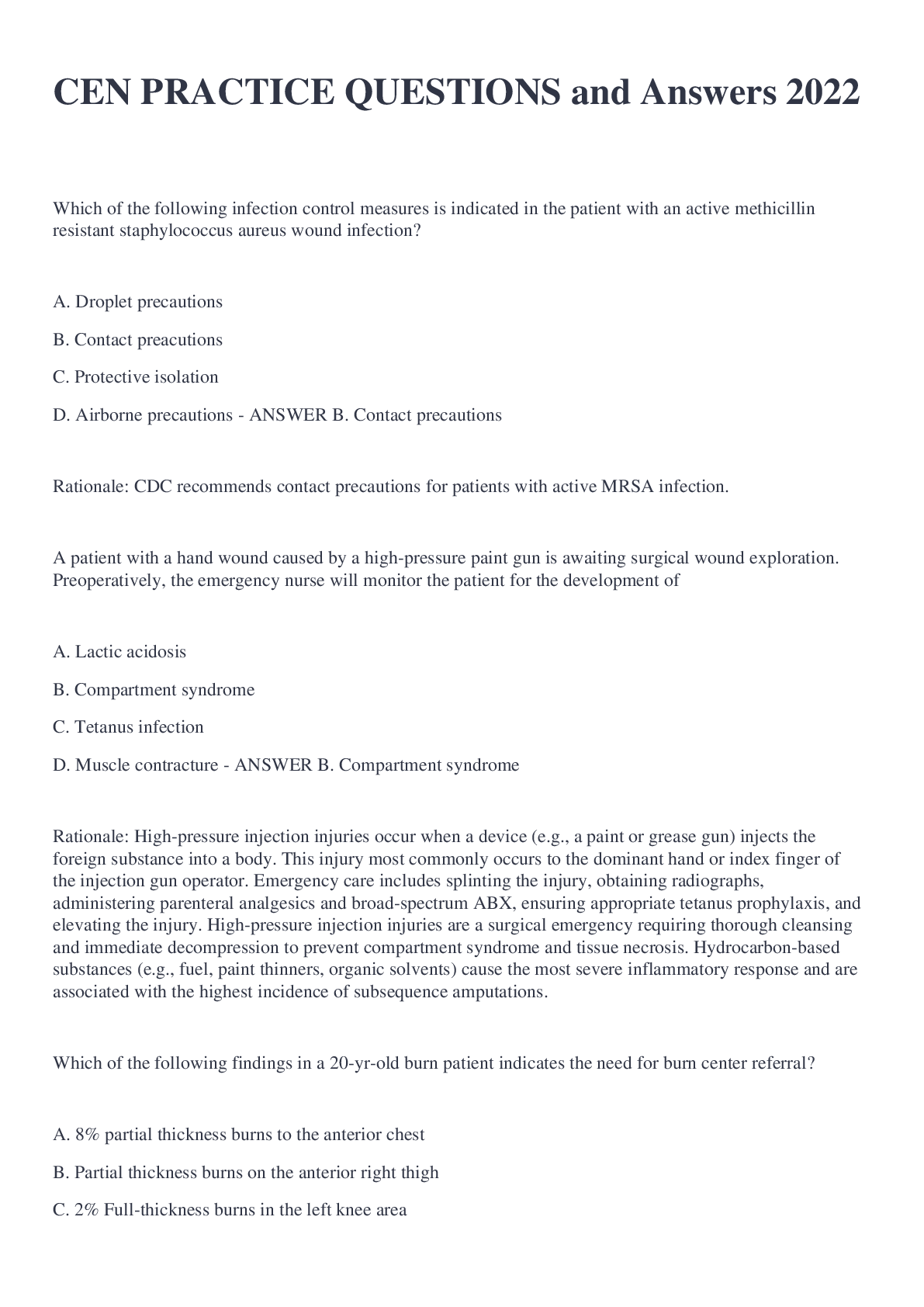


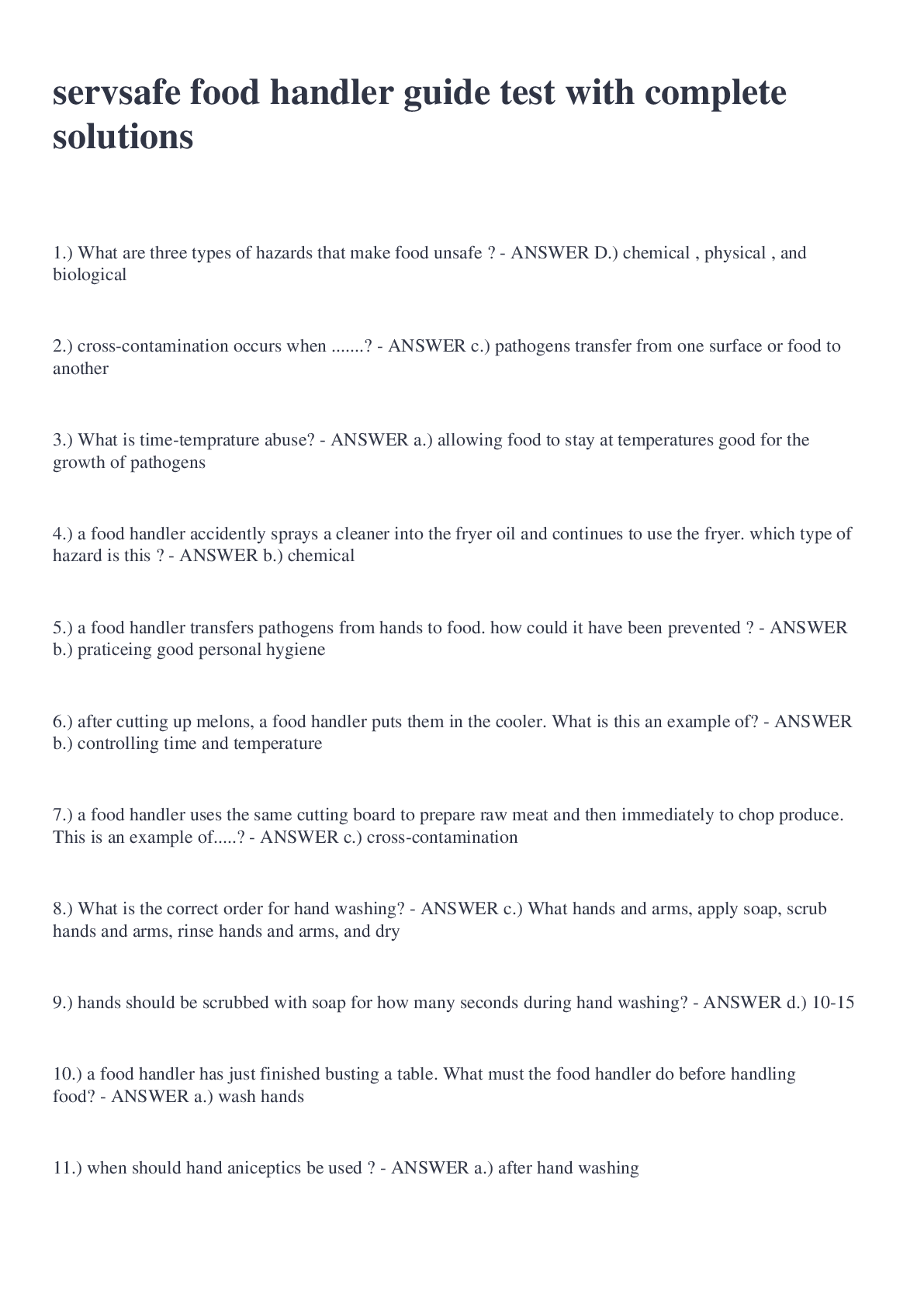


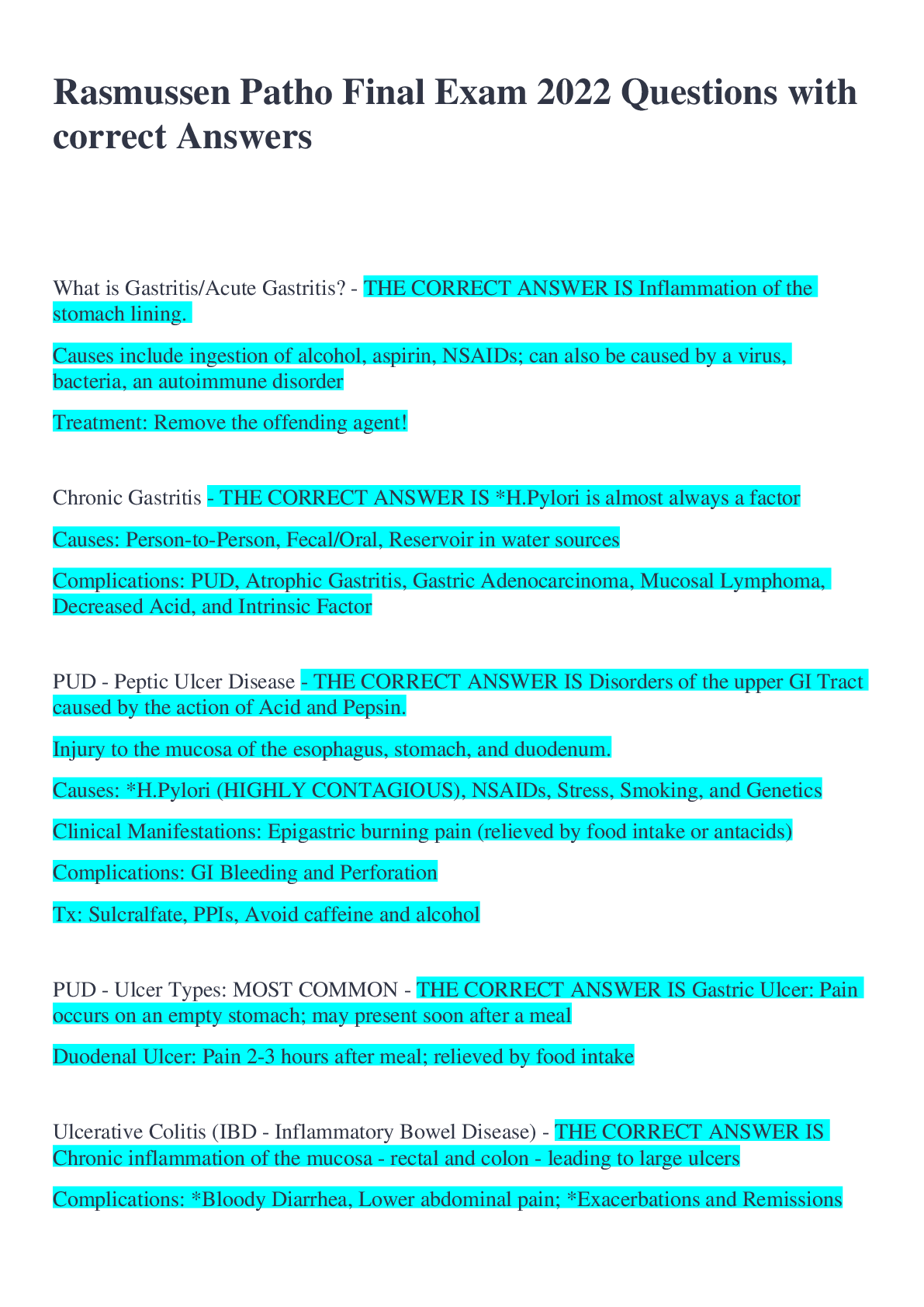
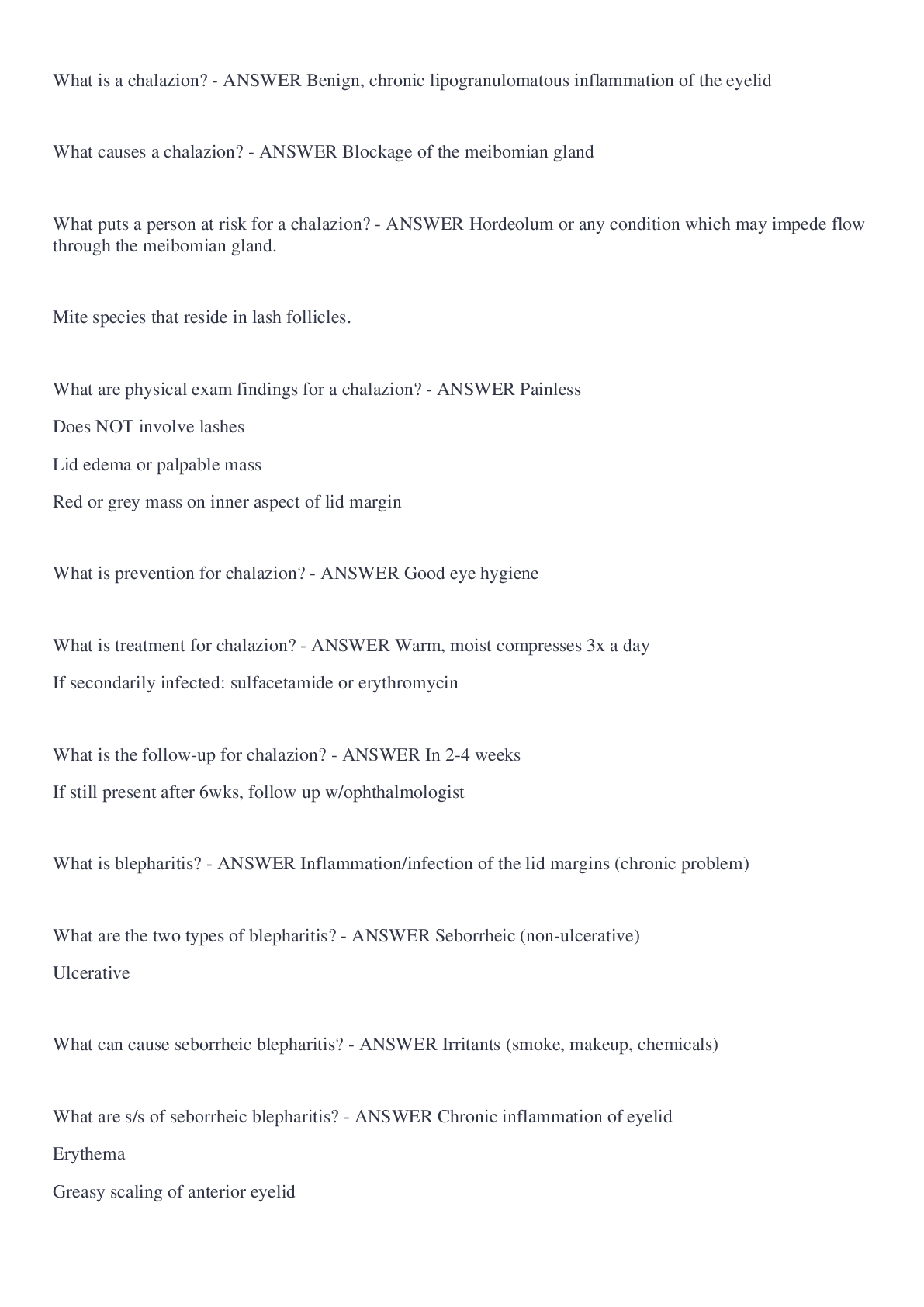
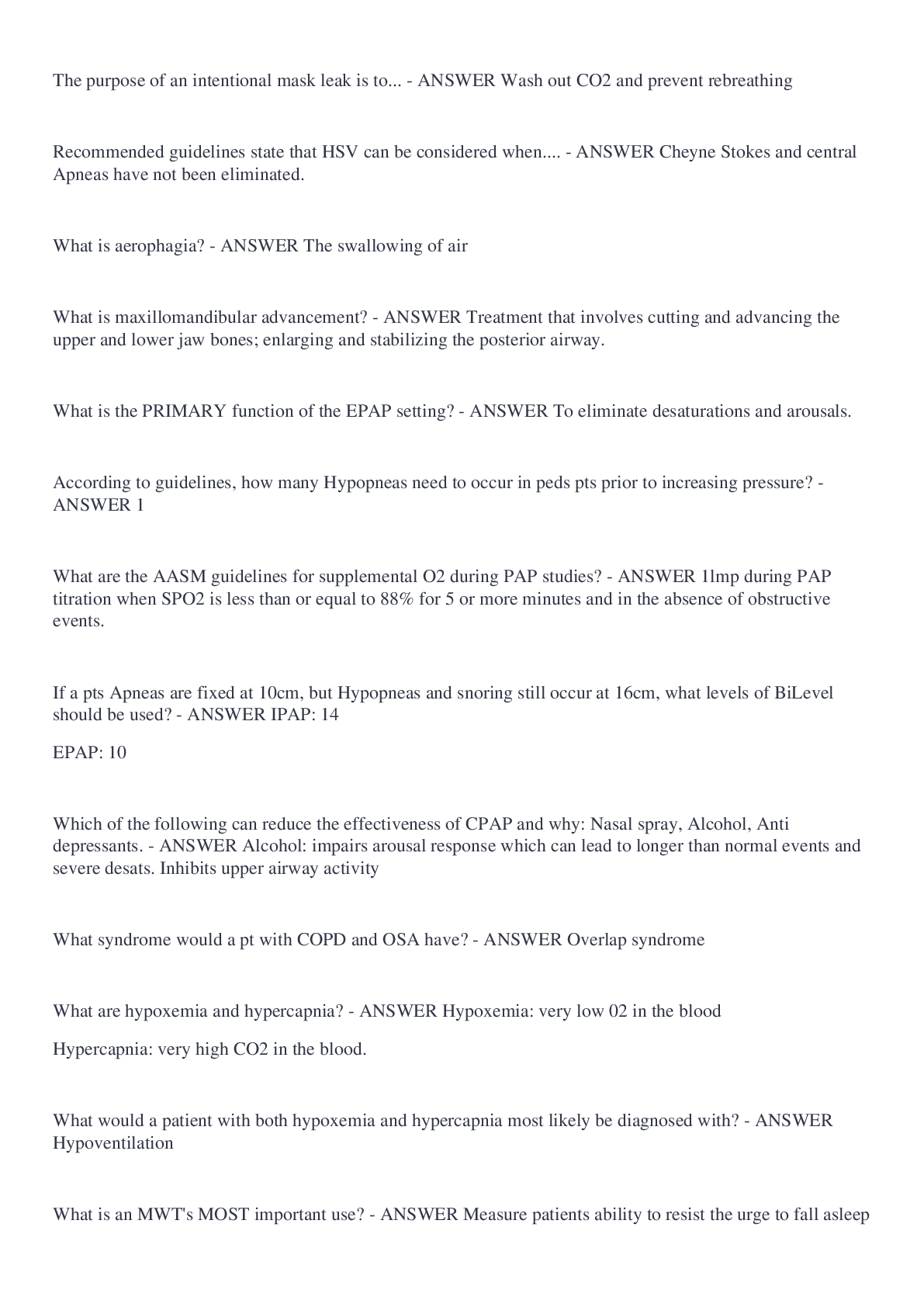



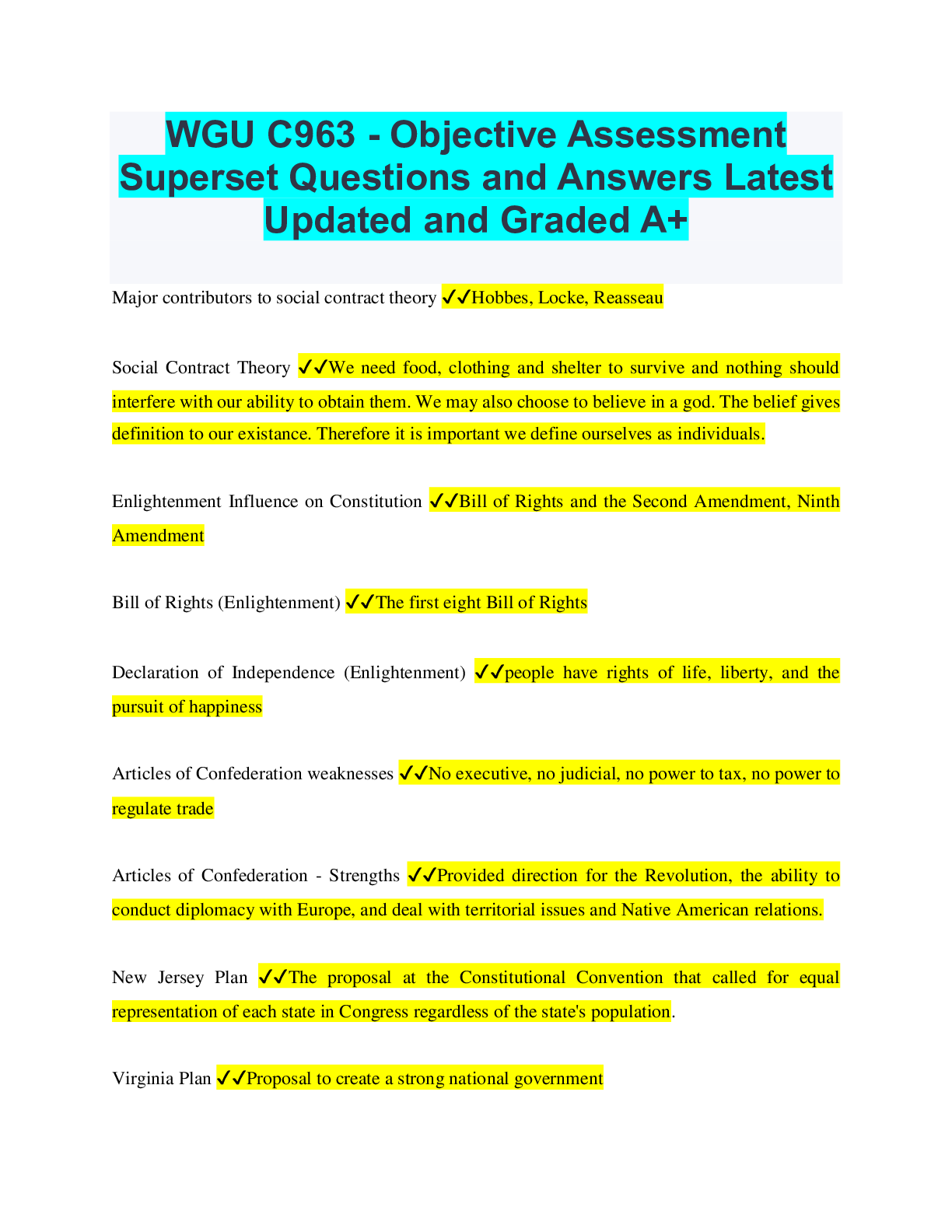

.png)




